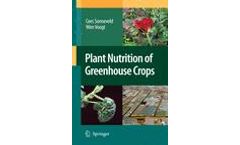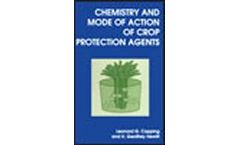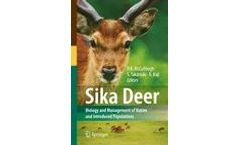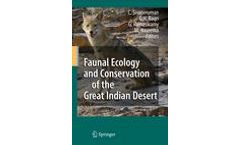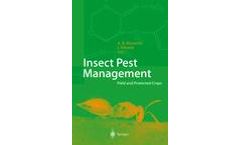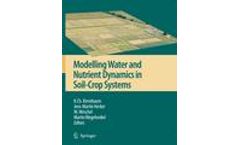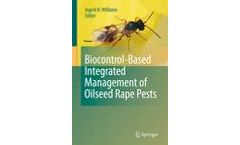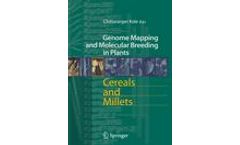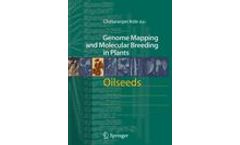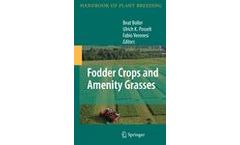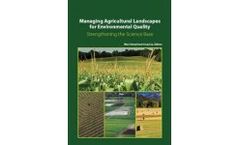Refine by
field-crop books
14 books found
Heterosis breeding based on male sterility has become established in many field crops and has been credited with high productivity. This book presents an update on the advent and promise of hybrids with comprehensive coverage of theoretical and applied aspects of heterosis breeding. ...
Plant nutrition in greenhouse cultivation differs in many essential aspects from field crops and justified the development of a special publication on this subject. ...
This book examines the chemistry and mode of action of herbicides, insecticides, fungicides and plant growth regulators. It follows crop protection strategies from early discoveries to the present day, emphasising the biochemical targets of the compounds discussed. Chemistry and Mode of Action of Crop Protection Agents provides an in-depth, yet easy to read and understand, review of the major ...
Sika deer, the graceful spotted deer of Japanese and Chinese art, originally were native to Asia from far-east Russia to Vietnam to the islands of Japan and Taiwan. They are widely raised in captivity to supply velvet antler for traditional medicine. They also were introduced to Europe, North America, and New Zealand, where they compete or interbreed with native deer. Sika deer typically occupy ...
Nevertheless, this unique region, consisting of very different habitats ranging from grassland, sand dunes and rocky expanses to hilly wooded terrains, but also crop fields and abandoned human habitations, features a spectacular biodiversity. In 16 chapters, reputed experts in their fields describe the regional climate and ...
The nature of the coevolutionary process that produced the interactions between plant kairomones and insect sensory organs suggests that kairomones can be employed for insect control in a variety of baits and traps. This book discusses the major theoretical approaches to the subject, as well as a number of specific applications in pest control. The authors describe their own work with ...
This book deals with new approaches to insect pest management in field and protected crops using ecologically sound and innovative techniques. ...
Soil-crop-atmosphere interactions play a central role in the multiple functions of rural landscapes. Agro-ecosystem models are increasingly used to support decision making on different scales towards sustainable land use and management.This is accompanied by a demand of model users for model validation to get an idea about the reliability of models. This book contains articles from a workshop on ...
Oilseed rape is a major arable crop in both Europe and North America. It is attacked by unique complexes of insect pests still largely controlled through the application of chemical insecticides. Crop management systems for the future must combine sustainability with environmental acceptability to satisfy both social and economic demands. This book, in its 17 chapters each led by a world expert, ...
With limited water resources to divert for agriculture, innovations aimed at increasing efficient use of irrigation water must be developed. Among the means to survive the consequences of water scarcity and yet to sustain high crop production under irrigated agriculture with decreasing share of water, deficient irrigation programs are highly valued and their adoption is widely promoted. ...
Genome Mapping and Molecular Breeding in Plants presents the current status of the elucidation and improvement of plant genomes of economic interest. The focus is on genetic and physical mapping, positioning, cloning, monitoring of desirable genes by molecular breeding and the most recent advances in genomics. The series comprises seven volumes: Cereals and Millets; Oilseeds; Pulses, Sugar and ...
Genome Mapping and Molecular Breeding in Plants presents the current status of the elucidation and improvement of plant genomes of economic interest. The focus is on genetic and physical mapping, positioning, cloning, monitoring of desirable genes by molecular breeding and the most recent advances in genomics. The series comprises seven volumes: Cereals and Millets; Oilseeds; Pulses, Sugar and ...
The main role of grasses, clovers and alfalfa in temperate agriculture is still to provide forage for ruminant animals but, in the last decades, the importance of amenity grasses increased markedly and, in the near future, new developments in the areas of energy and biomass use can be envisaged. Fodder Crops and Amenity Grasses, fifth volume in the series, Handbook of Plant Breeding, covers all ...
The “Managing Agricultural Landscapes for Environmental Quality: Strengthening the Science Base” workshop was one of a series of activities the Soil and Water Conservation Society (SWCS) has undertaken in support of the U.S. Department of Agriculture’s Conservation Effects Assessment Project (CEAP). The purpose of CEAP can be narrowly defined as an effort to improve our ability ...


